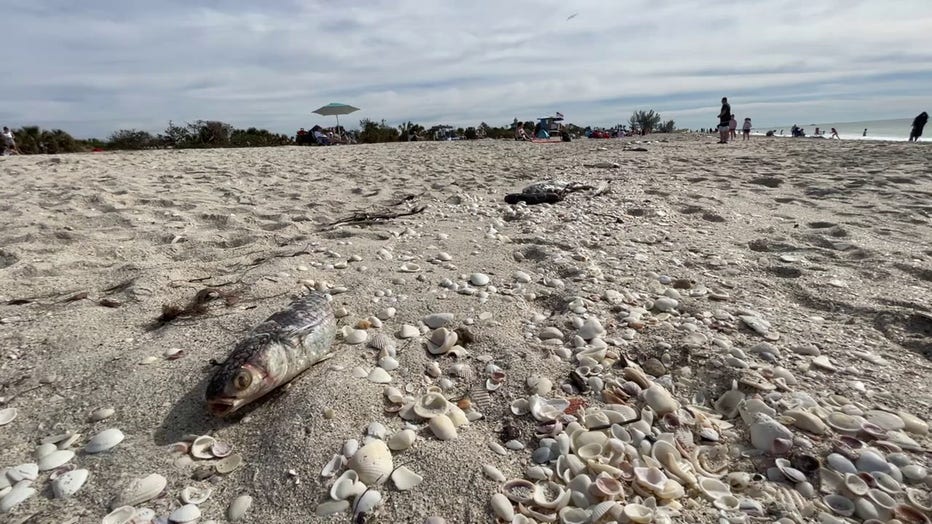Study shows releases from Lake Okeechobee could be impacting red tide locally

Some Bay Area beaches see red tide warnings
FOX 13's Kim Kuizon reports that Sarasota County's Nokomis Beach is under a red tide warning, and the current efforts to get the beaches red tides under control.
NOKOMIS, Fla. - Dead fish is the last thing beach-goers want to see, but that's exactly what washed ashore in south Sarasota County on Nokomis Beach.
The face of Craig Levy's granddaughter sums up what a lot of visitors were thinking.
"Yesterday was pretty brutal. We were on Manasota Key, and Manasota Key you wouldn’t breathe," Levy said. "We spent a lot of time walking, trying to go upwind, and eventually we had to leave because it was so bad."
READ: Florida citrus growers hoping for comeback in 2025
Satellite imagery shows the red tide bloom about 50-100 square miles south of Sarasota offshore. Dr. David Tomasko, the director of the Sarasota Bay Estuary Program, is watching it closely.
"Humans can’t make it, but we can make it worse by adding more nutrients," said Tomasko.

After a few years of research, Tomasko partnered with other scientists to pinpoint what’s fueling the red tide in Florida.
A study published in the Florida Scientist has made the connection to water releases from Lake Okeechobee, which often contains higher nutrients and nitrogen and makes its way down the Caloosahatchee River and into the Gulf of Mexico.
MORE: Milton farm losses could top $600M
"What happens with red tides in the Gulf of Mexico: They can be made worse in terms of being larger, more intense and longer lasting by discharges from the Caloosahatchee River," Tomasko said. "We have been seeing discharges from the Caloosahatchee River for about a month now. They’ve been discharging about 2,000 cubic feet per second, which is about 1.3 billion gallons a day."
Their research gives an equation showing how much of a benefit can come about by reducing red tide duration through Everglades restoration, which impacts the entire state of Florida.
"Everglades restoration will be good for the Everglades and for Sarasota in terms of red tide," said Tomasko.
WATCH FOX 13 NEWS:
STAY CONNECTED WITH FOX 13 TAMPA:
- Download the FOX Local app for your smart TV
- Download FOX Local mobile app: Apple | Android
- Download the FOX 13 News app for breaking news alerts, latest headlines
- Download the SkyTower Radar app
- Sign up for FOX 13’s daily newsletter

